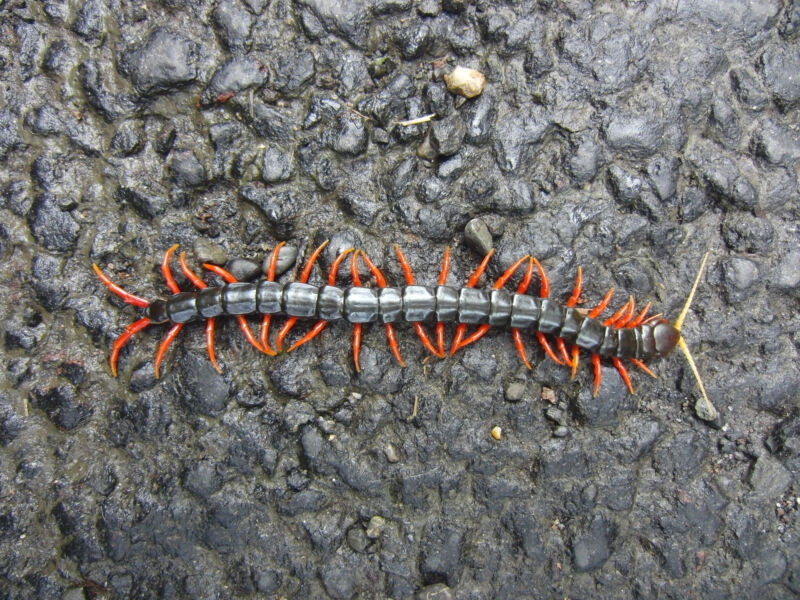
Enlarge (credit: Kriswanto Ginting)
Light-sensing proteins are found throughout all domains of life. Even single-celled microbes carry proteins that respond to light. And animals have light-sensitive organs in a huge range of shapes and architectures. All of these seem to operate along the same principles: Photons are absorbed by a protein that responds by allowing ions to flow across a membrane. In single cells, this sets off a regional difference in ion concentrations, allowing them to respond. In more complicated organisms, these ions flow into nerve cells, causing them to signal.
But scientists are describing a weird exception this week: the centipede. These organisms clearly respond to light, as anyone trying to stomp one before it rushes back under a rock or wall will know. Yet many species don't seem to have eyes (and many that have eye-like structures don't sense light with them). And studies of their genome indicate they don't have any of the normal light-sensitive proteins. So how do these arthropods do it?
See the heat
To be clear, many centipede species have things that look like eyes and contain some cells that respond to light. But studies of those organs indicate they have no major impact on the response of the animal to light. And then there's the lack of genes. Light-triggered proteins tend to have similar structures, in part because they have to form channels through the membranes that allow ions to pass through it. So, it's usually relatively easy to pick out genes for these proteins when genome sequences become available.
Read 10 remaining paragraphs | Comments
